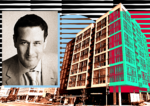Trending
The raw and the cooked
City’s dwindling stock of “true” lofts get tricked out as super-luxe abodes

Gone are the days when a limestone mansion on the Upper East Side was the ultimate New York City status symbol. Today, it’s an expansive downtown loft that has become the quintessential Manhattan home.
Romanticized by Hollywood and television producers (think late-1980s/early-1990s blockbusters like “Big,” “Ghost” and “Three Men and a Baby”), the ad-hoc live-work spaces of Soho, Tribeca and beyond are now the fixation of wealthy homebuyers the world over. Yet today, just over 40 years since they were legalized for residential occupancy, only a handful of truly raw lofts exist in all of Manhattan, industry insiders told Luxury Listings.
Each passing year, a few more members of New York City’s 1960s and ‘70s avant-garde die, allowing their highly-coveted loft spaces to hit the real estate market for the first time in decades. Then, snapped up by wealthy investors eager to tap into the cultural cachet of owning an “authentic artist’s loft,” these homes are given high-end finishes, chef’s kitchens and roof decks — not to mention bedroom walls. Thus, another raw loft is moved up the housing hierarchy, from a makeshift artist squat to penthouse playground.
“Generally speaking, people are renovating lofts with the ‘new-condo aesthetic,’” said Jeremy Stein, a senior global real estate advisor at Sotheby’s International Realty, who is currently listing a mostly-raw Soho loft space, already prepped for a big-ticket renovation, for $10.75 million. “They are really tricking these things out, and renovating in a manner that removes the original bones. You then have one less loft in the world.”
Stein estimates that there are only perhaps two or three raw loft spaces left in Soho, and another two or three in Tribeca — although there are more lofts to be found throughout Manhattan in the former commercial buildings of Chinatown, Hell’s Kitchen and beyond. But with more and more lofts vanishing from the market each year, prices for unfinished loft spaces — which already list anywhere from about $3 to $12 million — are expected to continue their climb, brokers said. It’s a rags-to-riches story if there ever was one.
The raw
Ironically, the once-illegal loft, anti-establishment to its core, was the bedfellow of capitalist interests nearly from the beginning. It started in 1962 when Chester Rapkin, the influential theorist of urban planning, took a page out of London’s playbook and rebranded downtown’s derelict cast-iron industrial buildings south of Houston Street as Soho.
The success of the new appellation crystallized what was already a nascent, artist-fueled transformation of Lower Manhattan’s former red-light district into the luxury retail and celebrity-housing corridor familiar to New Yorkers (and, of course, tourists) today.
At the time of Soho’s branding, artists were living in illegal gypsy camps above largely defunct commercial spaces. The threat of Robert Moses’ Lower Manhattan Expressway — the infamous 10-lane elevated highway would have paved over swaths of Soho and Little Italy — had pushed most manufacturing out of the area. Landlords were happy to collect whatever meager rent they could, according to longtime loft resident Shael Shapiro, co-author of “Illegal Living: 80 Wooster Street and the Evolution of Soho.” “The artists paid very little and the landlords made very few repairs,” he said.
By 1967, the first successful artist co-op was housing a few dozen now-eminent figures of the avant-garde at 80 Wooster Street, including George Maciunas, Yoko Ono and Nam June Paik. The warehouse soon became the headquarters of Fluxus, an international network of neo-Dadaists, which Maciunas described “as a fusion of Spike Jones, vaudeville, gags, children’s games and Duchamp.”
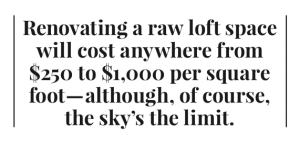 The co-op’s success as a live-work art space almost immediately made the building the prototype for hundreds of loft conversions downtown. Within a few years, loft values were skyrocketing. “I bought a loft at 80 Wooster Street in 1967 for $5,000 and sold it for $36,000 [in the early 1970s],” Shapiro said. “I thought it was incredible that you could sell a loft for $36,000; that you could actually make money at it.”
The co-op’s success as a live-work art space almost immediately made the building the prototype for hundreds of loft conversions downtown. Within a few years, loft values were skyrocketing. “I bought a loft at 80 Wooster Street in 1967 for $5,000 and sold it for $36,000 [in the early 1970s],” Shapiro said. “I thought it was incredible that you could sell a loft for $36,000; that you could actually make money at it.”
Thus, it became the artists themselves who initially gentrified their close-knit bohemian communities. “As time went on people started to say, ‘Hey! Maybe I can make some money converting warehouses into lofts.’ So some of the earliest developers in Soho ended up being artists,” said Shapiro, who drafted an early version of the law that eventually legalized loft living.
Around that time, Shapiro recalls co-op owners meeting to discuss strategies for keeping lofts affordable for artists. But after witnessing the relatively large sums being made by other loft owners who cashed out, the group decided not to keep prices artificially low. “We would have just been subsidizing the buyer at our own expense,” Shapiro said.
Lofts were now subject to the same economic forces affecting real estate throughout the city. By the 1980s, Soho residents were bemoaning the loss of galleries as the neighborhood evolved into a tourist attraction. By the 1990s, uptown boutiques were replacing art spaces at a revolutionary pace, according to Shapiro.
Today, after nearly four decades of snowball gentrification, Soho is one the most expensive neighborhoods in Manhattan — the median sale price of new development condominiums reached $4.7 million in the second quarter of 2014, the highest in Manhattan, according to the brokerage MNS — largely thanks to the loft.
The cooked
The second generation of loft owners — mostly artists and families — didn’t tend to over-renovate. Downtown lofts remained makeshift flats; vast wall-less spaces with as many bedrooms and bathrooms as the resident could afford tucked into nooks and closets.
But the loft of today — synonymous with high-end finishes and over-the-top amenities — is only as recent as the monsoons of externally sourced money that have washed over Manhattan the past 15 years or so. The competition for housing in Manhattan is so cutthroat that any large space naturally commands a premium. “Where else can you get 5,000 square feet on one floor?” said Douglas Elliman’s Gabrielle Frank, who regularly markets loft spaces in downtown Manhattan. “It’s something buyers couldn’t possibly get on Park Avenue. In fact, now [uptown] developers are trying to copy what we have down in Soho and Tribeca.”
Moreover, the trend amongst today’s multimillionaires is to emulate the creative classes. They prefer blank canvases to finished products — and lofts offer the ideal opportunity to create a truly bespoke home.

Gabrielle Frank
“People are even converting churches and banks, spaces that weren’t formerly habitable,” Frank said. “I think wealthy buyers like the idea of history. They like to know what these spaces used to be.” Full of history — but without the aesthetic thumbprint of a previous generation. Every square inch of a loft, from the building materials to the layout, can be tailored to an individual’s exacting needs.
Still, some say it’s absurd to drop millions on what is essentially an empty shell that requires additional millions to renovate. Brokers estimate renovating a raw loft space will cost anywhere from $250 to $1,000 per square foot — although, of course, the sky’s the limit.
Nevertheless, compared with the price of new condos, buying and renovating loft space can still present a deal. “It is rare to find a raw loft space, because there are fewer and fewer of them,” Stein said. “But when one crops up, people see the opportunity to renovate it and add value.”
“Lofts are selling mostly to investors,” he adds. But these investors aren’t necessarily flipping their properties, he said. Instead, they’re residing in these spaces with the intention of someday selling for a significantly marked-up price.
Today’s “raw” lofts are almost universally delivered in a hybrid state, partially renovated but with many of the original bones still exposed. Take Penthouse B of 481 Greenwich Street in Soho, a 4,500-square-foot loft space currently listed with Stein for $10.75 million. At first glance it appears to be an archetypal loft: crude, spacious and guts exposed. But another look reveals a pre-installed high-end kitchen and floors, ceilings and walls that have all been finished and painted. This is frou-frou DIY par excellence: a space readied for a team of interior designers, rather than the owner, to get down and dirty in.
Unit 2B at 473 Broome Street in Soho, a loft on the market with Core’s Michael Rubin and Shaun Osher for $4.89 million, comes more or less ready for a design team, rather than a contractor. The apartment is delivered as a white box, but according to Rubin, “everything in it has been upgraded by the previous owner, an artist who lived there for about 15 years.”
For those who really covet the authentic DIY loft renovation experience, Brooklyn, as it so often is these days, is now the “it” locale. And the Manhattan-esque prices commanded by Brooklyn’s loft-filled neighborhoods, like Williamsburg and Bushwick, serve as a testament to just how powerful a status symbol lofts remain. “I tried to buy my daughter a loft in Brooklyn,” Shapiro said. “I was absolutely shocked by how difficult [and expensive] it had become.”
Still, for those with big dreams and hefty bank accounts to match, there’s no shortage of lofts on the Manhattan market. From mostly-raw spaces to fully “gourmet” spreads, read on for a look at some of the hottest downtown lofts up for grabs today.
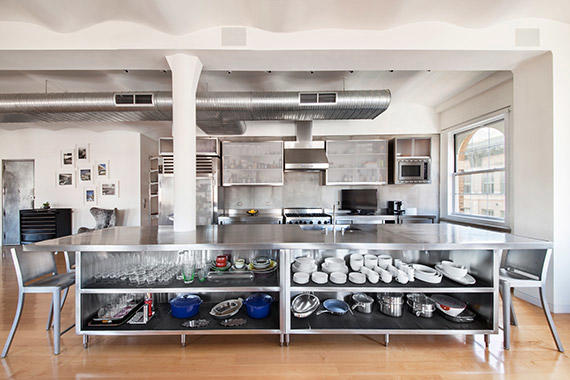
429 Greenwich Street
429 Greenwich Street #9B
A liberal amount of stainless steel distinguishes this unique 3,954-square-foot double corner residence in Tribeca’s Dietz Lantern Building – a former lantern factory. And for the $10.49 million price tag, the buyer receives four bedrooms, four baths and a private terrace. And fans of industrial design will love the twelve-foot barrel ceilings, arched brick doorways with original stamped metal fire doors, stainless steel kitchen and concrete baths. Stribling’s Mary Ellen Cashman and Jane Gardner have the listing.
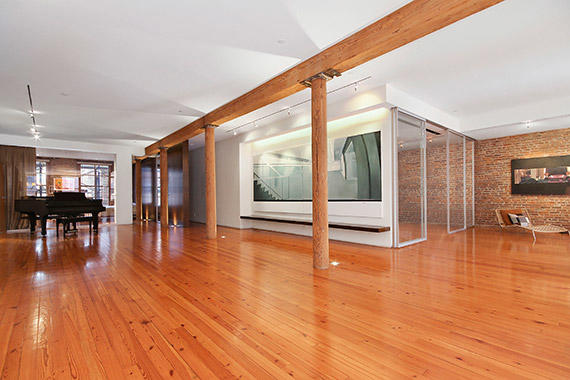
30 Crosby Street
30 Crosby Street #4B
With both factory elements and high-end finishes, this 4,123-square-foot Soho loft asks $8.25 million. Besides columns, expansive wood floors and a heavy helping of exposed brick, the condo also boasts a chef’s kitchen by Benjamin Noriega-Ortiz, climate-controlled wine storage, a wood-burning fireplace and three custom marble baths. Daren Herzberg, Julie Pham and Brian Babst of Corcoran are marketing the property.
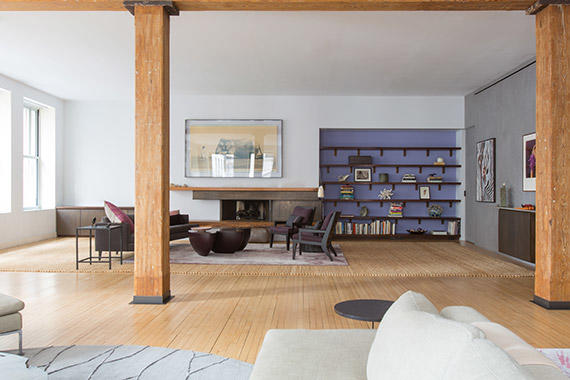
76 Crosby Street
76 Crosby Street #4
In the heart of cobblestone Soho, this high-end renovation job is on the market for $9.99 million. Weighing in at a sizable 5,262 square feet, this four-bedroom, three-bathroom loft has swapped the raw aesthetic for the “new condo” feel, complete with a “state-of-the-art” Lutron system. The full-floor condo features a classic rectangular shape, 22 windows and a chef’s kitchen. Edward Hickey and Susan Meisel of Meisel Real Estate have the listing.
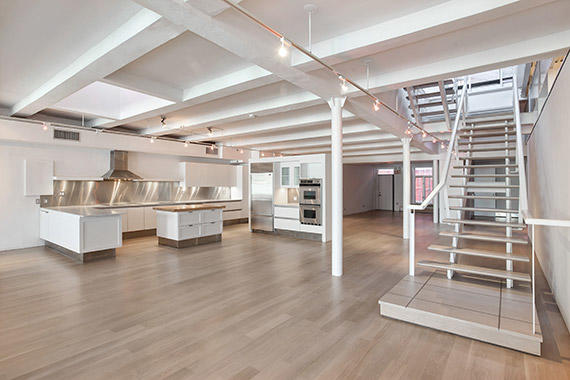
481 Greenwich Street
481 Greenwich Street #PHB
This hybrid raw/renovated Soho condo is design-team ready, with exposed but polished bones. Asking $10.75 million, the 4,500-square-foot loft boasts nearly 3,000 square feet of outdoor space and a private elevator. The pad includes two open floors, original columns, exposed brick walls and multiple skylights. Jeremy V. Stein, Robin Stein and Jennifer Lanza of Sotheby’s International Realty have the listing.
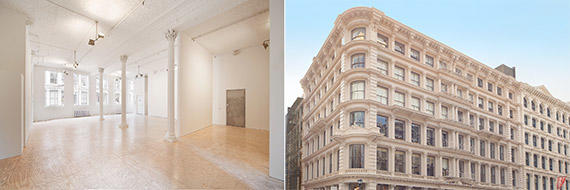
473 Broome Street
473 Broome Street #2B
For those who really want to create a bespoke living space, this mostly raw 2,400-square-foot loft in Soho is on the market for $4.89 million. A high-end kitchen has been installed, but the rest of the renovation is up to the buyer’s tastes. The co-op features Corinthian columns and a rooftop terrace. Michael Rubin and Shaun Osher of Core are listing the property.
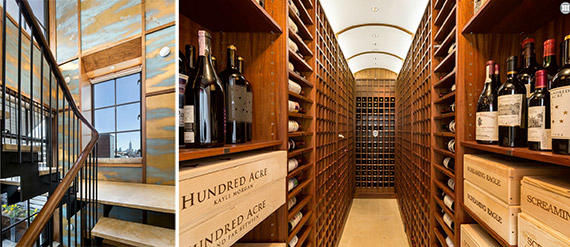
420 West Broadway
420 West Broadway #PHB
A testament to how far the loft has come, this jaw-dropping former raw loft space is asking $19.75 million — $5,496 per square foot. Once a raw loft space, architects Edward Siegel and Ernest de la Torre transformed the place into a stunning 3,593-square-foot co-op. Beyond the high-end kitchen and private terrace, this home comes with artistic provenance: “This was where one came to see the shows of artists like Jasper Johns and Roy Lichtenstein in the early years [of Soho],” according to the listing. Douglas Elliman’s Raphael De Niro and Adam Modlin of the Modlin Group are co-listing the apartment.




